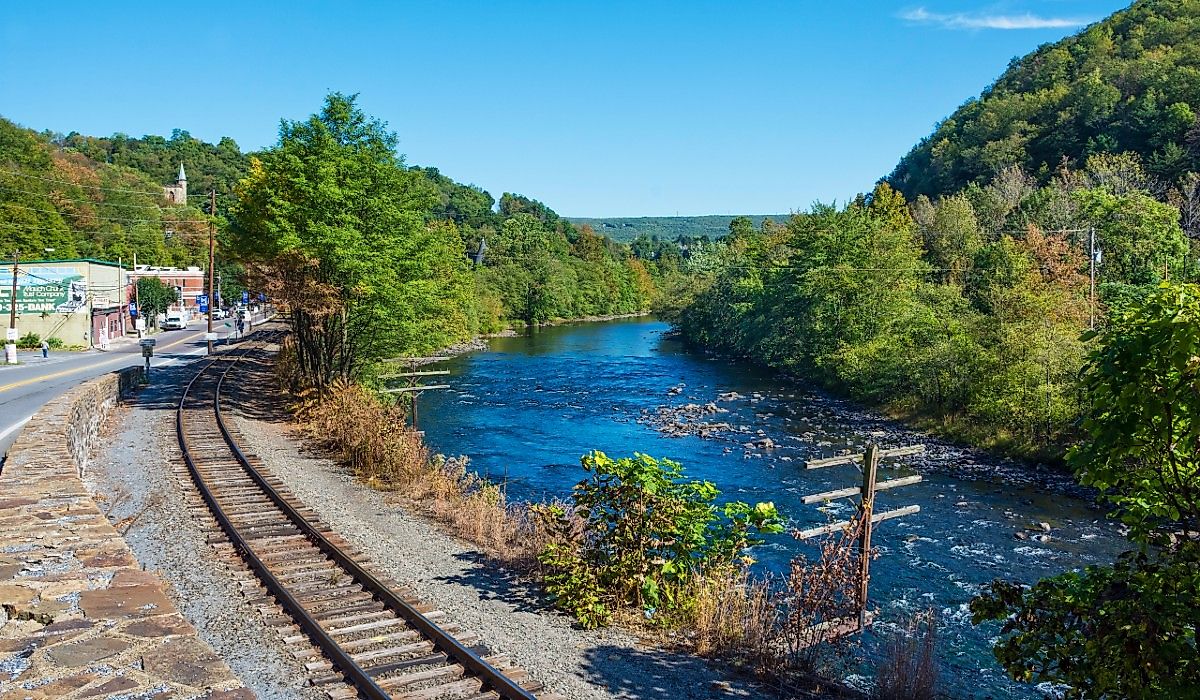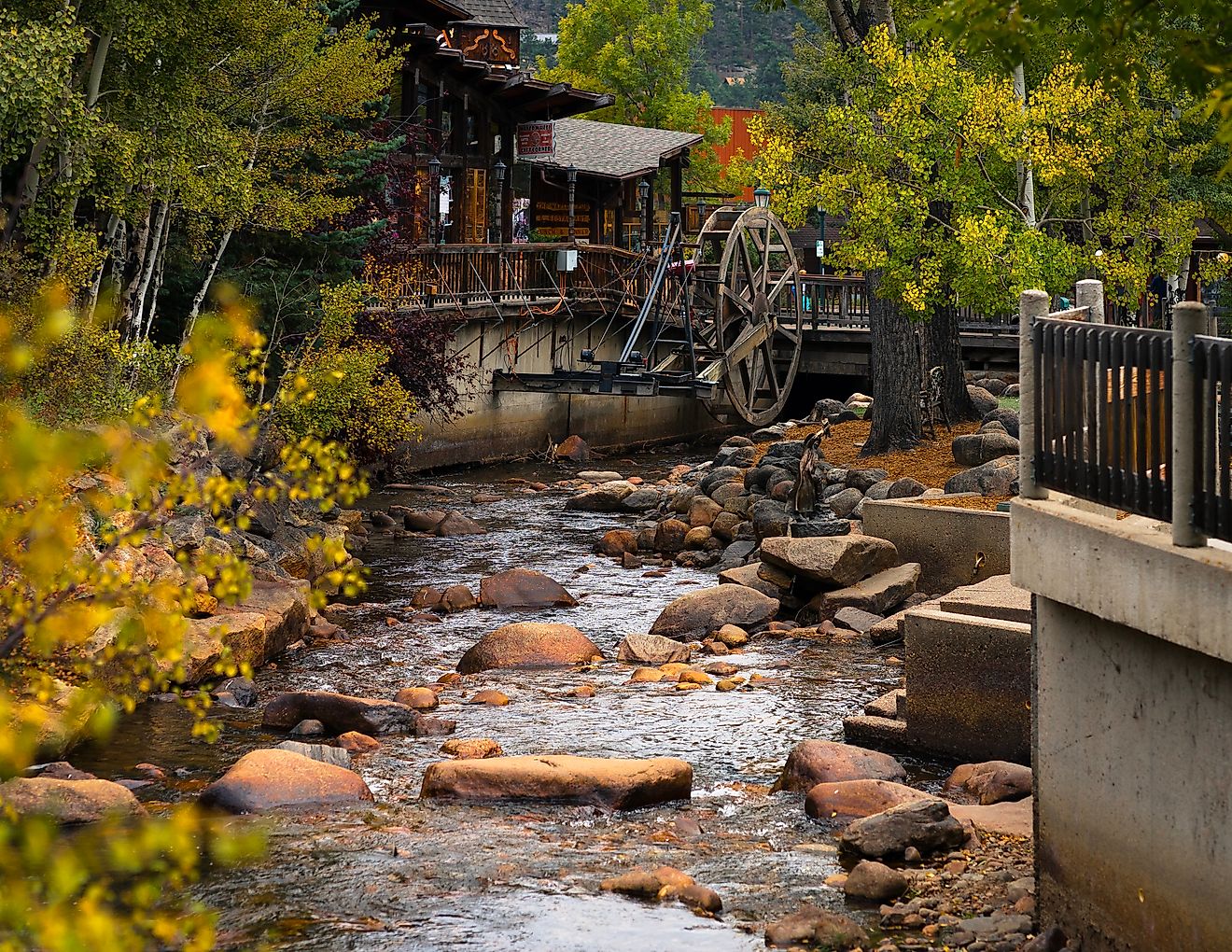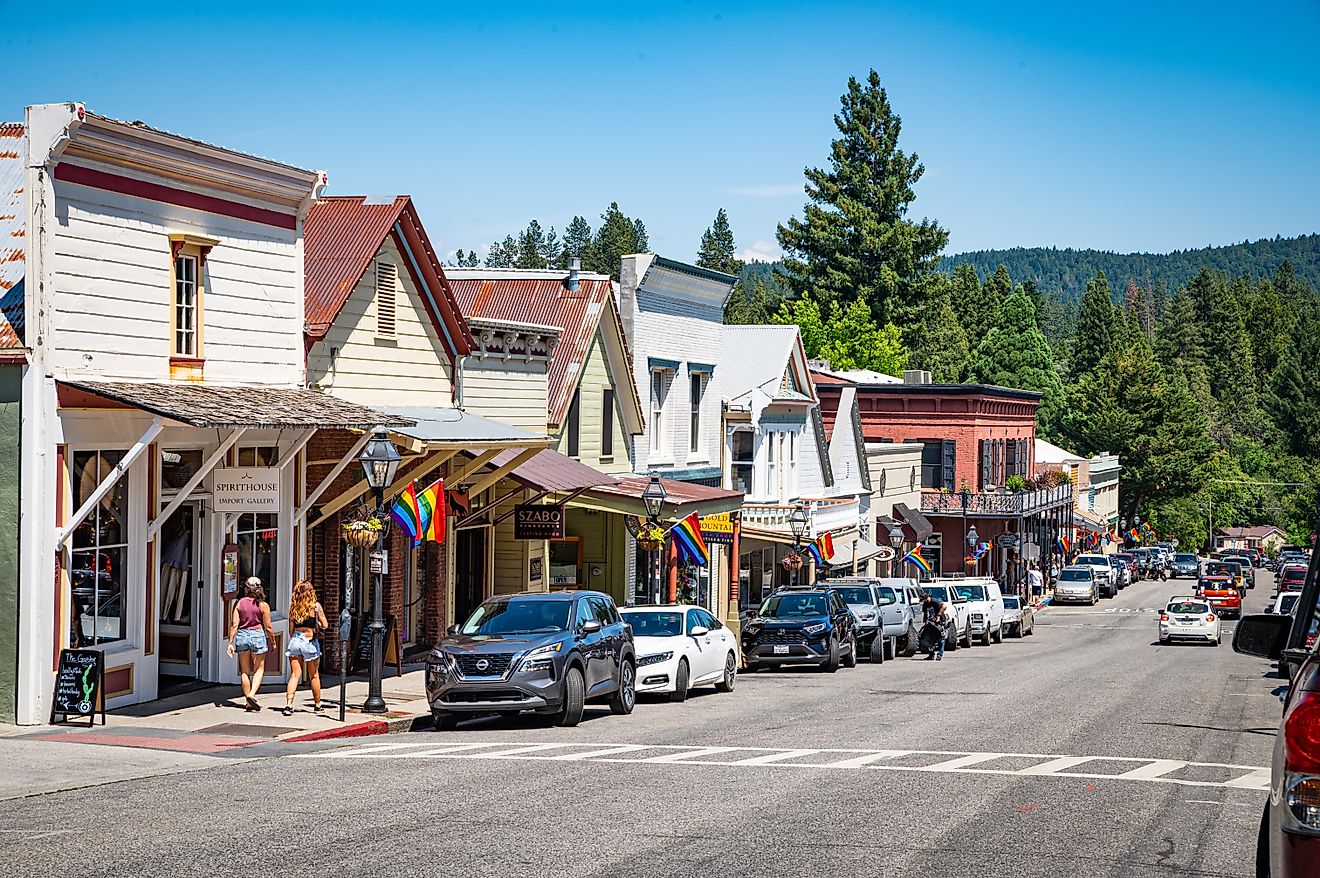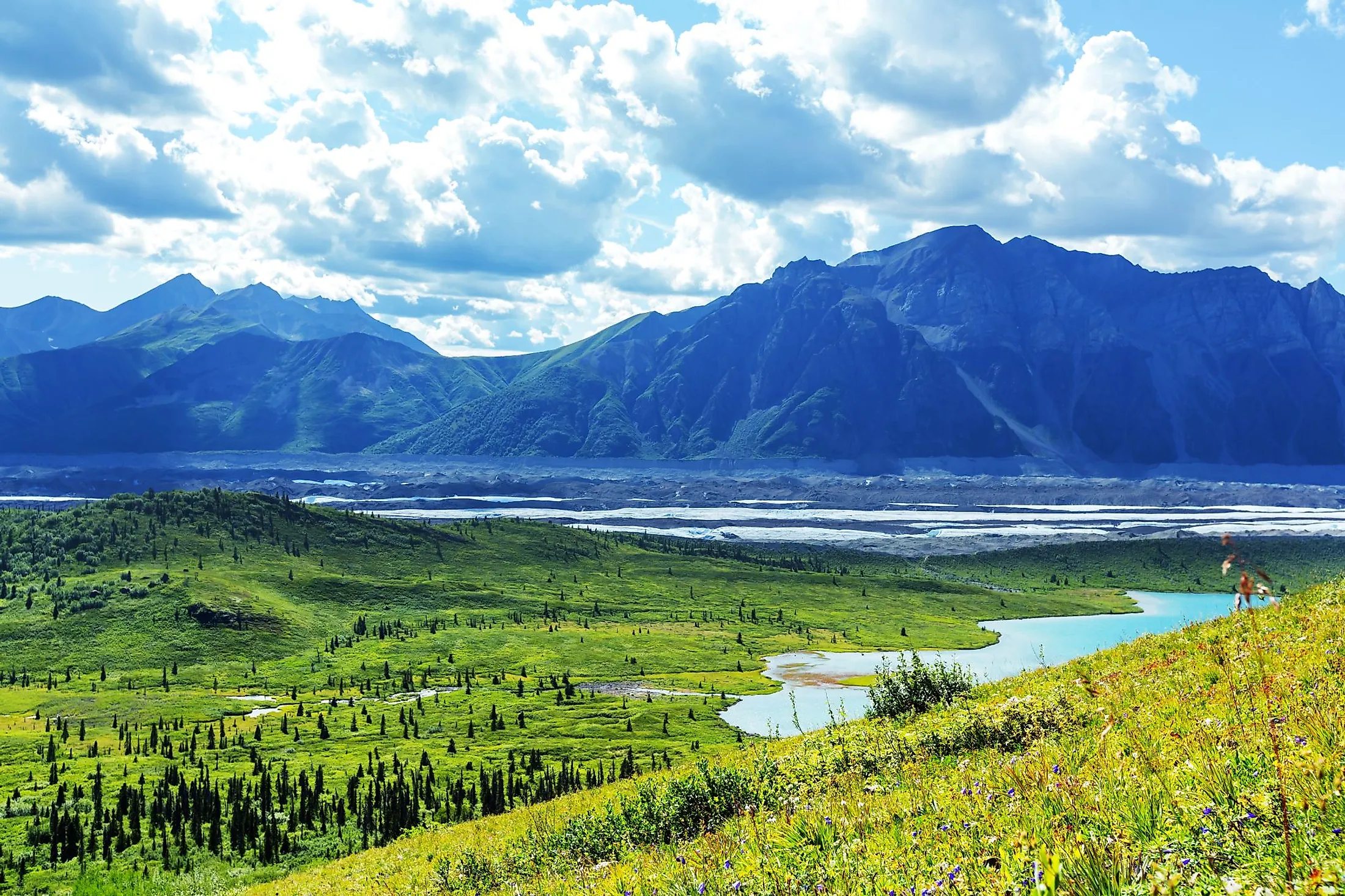
Wrangell St. Elias National Park And Preserve
If there is one word to describe Wrangell St. Elias National Park and Preserve, it’s huge. This expansive parkland covers more than 53,320.57 square kilometers of Alaskan wilderness and is by far the largest national park in the United States. Its area could fit Yellowstone National Park within its borders six times. It is also one of the less visited parks, mainly due to its remote location within the northernmost state of Alaska. Those that do venture to this far reaching national park, though, will experience an amazing display of ice, tundra, wilderness and wildlife like nowhere else in the nation.
The park was first designated on December 1, 1978 as Wrangell-St. Elias by President Jimmy Carter under the Antiquities Act, but not finalized as a National Park until December 2, 1980. The area includes both National Park and Preserve, meaning that hunting and gaming is allowed in the designated ‘preserve’ areas, a necessity for many that live off the land in the area.
Mountains and Glaciers
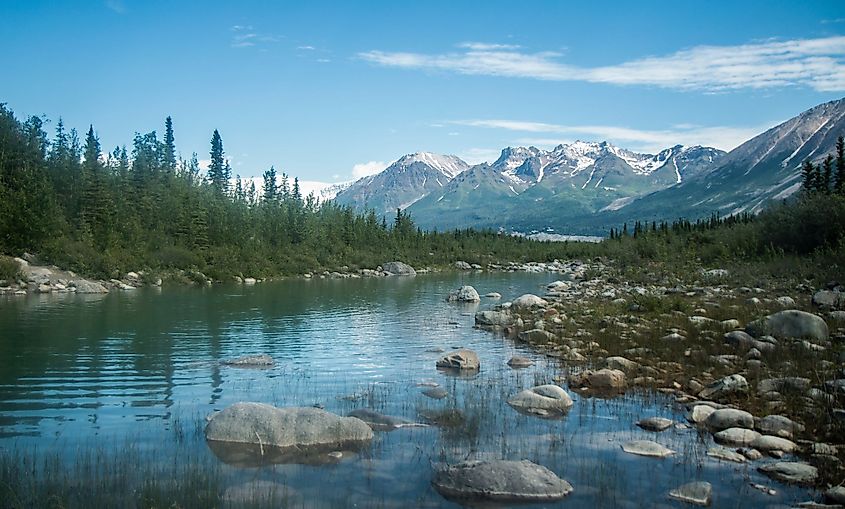
The landscape of the park is large and expansive. Its primary features are the Saint Elias Mountains, which include many of the highest peaks in both the United States and Canada. This range is one of several mountain ranges within the park, the others being the Wrangell Range, the Chugach Mountains, the Nutzotin Mountains part of the Alaska Range, and the smaller ranges Granite Range and the Robinson Mountains.
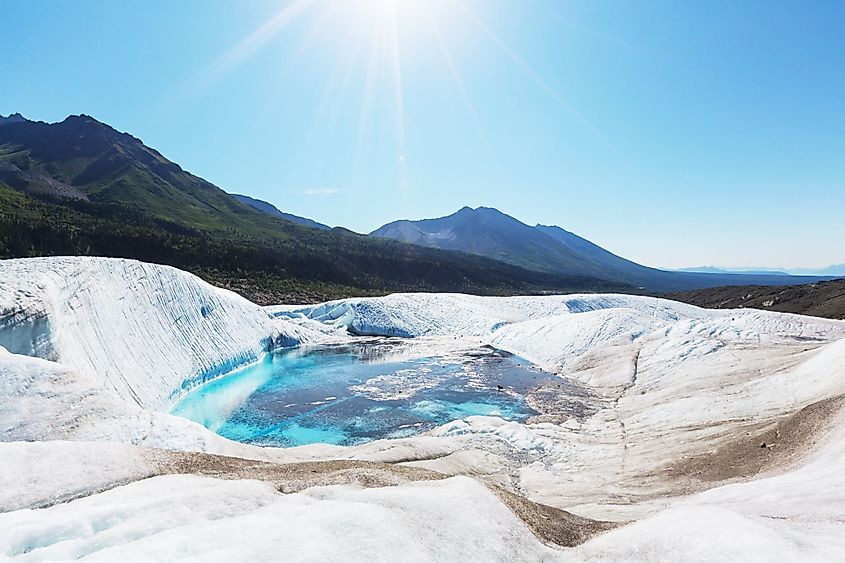
As well as the impressive mountain range, the area also includes a number of glaciers and the Bagley Icefield. Bagley is mainly in high elevations, and tops part of both the Chugach and Saint Elias Mountains. This icefield is approximately 294 kilometers long, 10 kilometers wide, and up to 914 meters thick. It is the second largest non-polar icefield in North America. The Bagley icefield drains into and feeds several other smaller glaciers in the region. To the southeast lies the Malaspina Glacier, a 600 meter thick glacier that covers some 3,900 square kilometers. The eastern border of the park, where the state of Alaska meets Canada, is also home to Hubbard Glacier, which is the largest tidewater glacier in North America. Hubbard sits at an elevation of 3,400 meters and covers and measures approximately 122 kilometers long, 11 kilometers wide and 183 meters tall at its terminal face.
Waterways
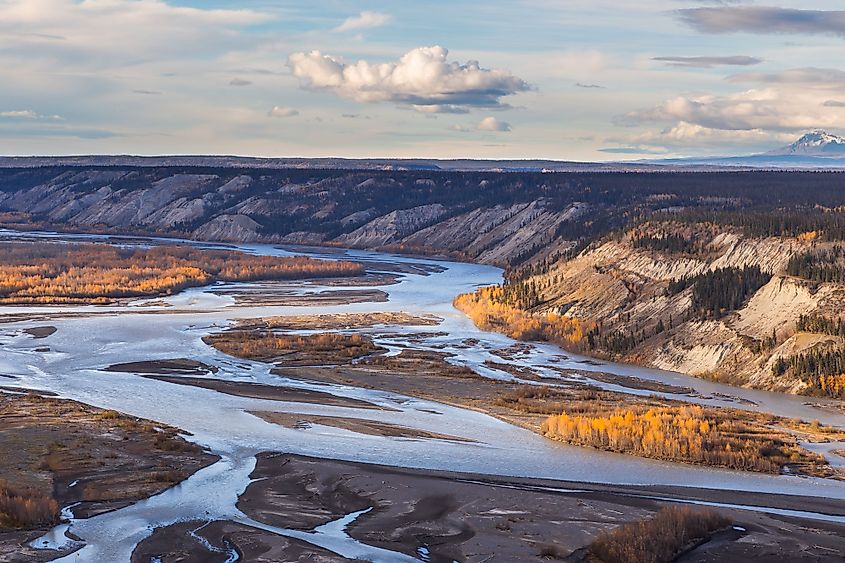
Because of the presence of many ice flows, and the abundance of snow and precipitation, many rivers run among the mountains and glacial valleys. Some of the most prominent include the Chitina River, Chisana River and Nabesna River. The western border of the park is also flanked by the Copper River, which flows into many other rivers and tributaries in the region. The headwaters also stem from within the park at the Copper Glacier. The waterways have provided travel for many residents in the area for centuries, and allow for faster and safer passage in many cases. For visitors, they also offer a place fro recreation as rafting, canoeing and kayaking are popular among those that make the trek north.
Wildlife
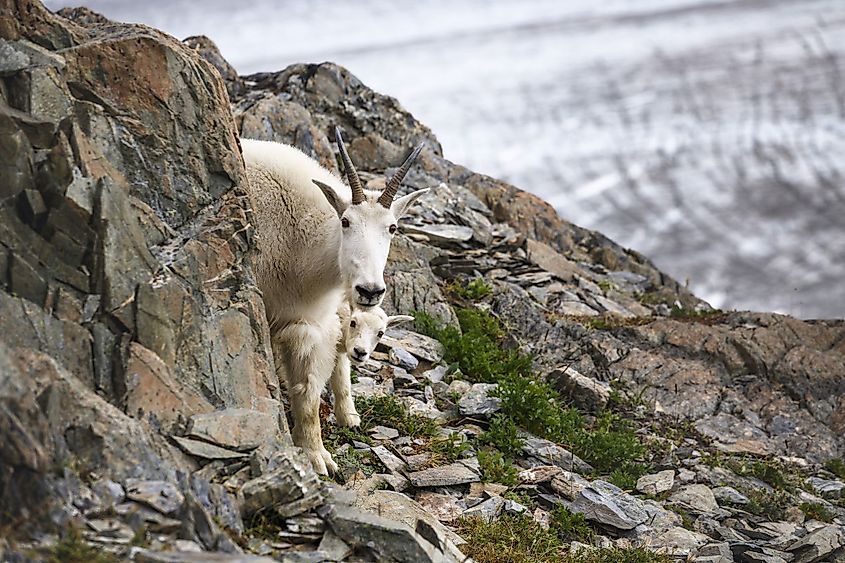
The wilds of Alaska are full of all sorts of wildlife. The remote nature of Wrangell-St. Elias means that there are far more animals than people among the acres of tundra and wilderness. Elk and caribou run in herds over the tundra while wolves can be seen patrolling and hunting in their tight-knit packs. Grizzly bears, and black bears too, call the park home. Other mammals in the region include red foxes, coyotes, martens, Canadian Lynx, as well as wolverines, weasels, snowshoe hares,voles, mice, and marmots.
In the mountains, dall sheep and mountain goats run among the rocky outcroppings and large birds of prey roost. There are a documented 93 species of birds in the park, only 24 of which live their year round (the rest move south during the harsh winters). Some of the species found in the park include willow and rock ptarmigan, Canada jays, ravens, hermit thrushes, American robins, hairy woodpeckers and northern flickers. Of the raptor category, owls are most prominent, and great horned owls, northern hawk owls and boreal owls all live in the area.
Because of the abundance of rivers and the proximity to the Gulf of Alaska, a large number of fish and marine life can also be spotted here. In the gulf waters, whales, porpoises, sea lions and harbor seals are all commonly found, as well as the rare and endangered Steller sea lion. In the freshwater streams, some 21 species of fish have been found, many of which are hunted as a primary food source for residents. These species include Chinook; chu; coho; sockeye and pink salmon; lake, cutthroat and rainbow trout; and arctic grayling, to name a few.
Overview
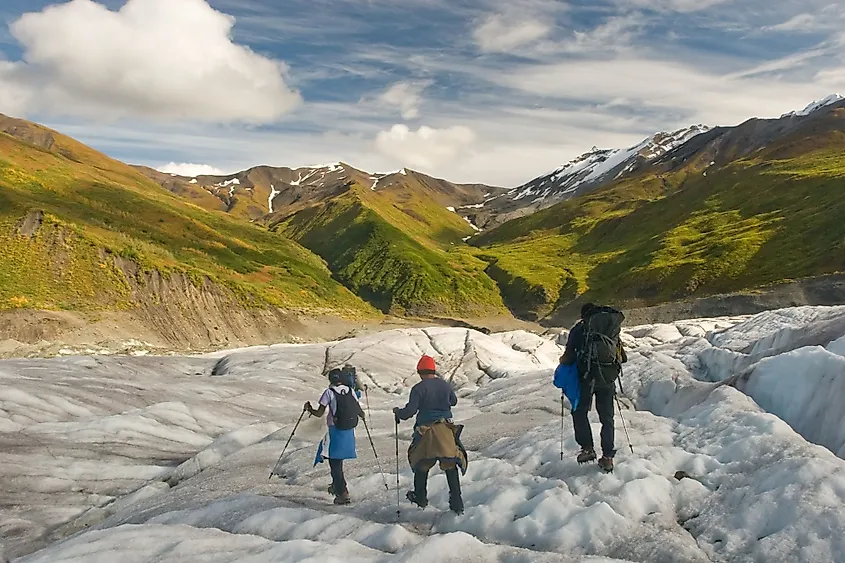
Though this National Park experiences far less visitors than others, and is significantly harder to get to than most, those that choose to venture off the beaten path can experience a world of untouched wonder and pure wilderness in the Alaskan tundra. Whether hiking, horseback riding, rafting or camping, the park offers nature in its most natural form for those willing to explore it.

